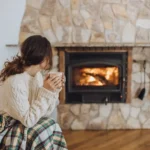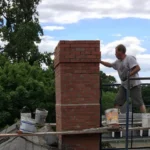Your home’s attic might seem like a forgotten space, but it plays a crucial role in your comfort and energy bills. When an attic lacks proper insulation, it can lead to various hidden problems.
In this article, we’ll delve into the often-overlooked dangers of a poorly insulated attic and how to address them. From rising energy costs to uncomfortable indoor temperatures, mold issues, structural damage, and even unwelcome pests, there are numerous reasons to ensure your attic is well-insulated.
Stay with us as we explore these concerns and discover effective solutions to keep your home safe, comfortable, and cost-efficient.
Higher Energy Bills
Poor attic insulation can lead to higher energy bills. When your attic isn’t insulated well, your heating and cooling systems have to work extra hard to maintain a comfortable indoor temperature. This means you end up paying more for energy.
To tackle this issue, make sure your attic has proper insulation. You can add more insulation or upgrade your current one to higher-quality materials. This will help reduce your energy usage, cut down on your utility bills, and make your home more energy-efficient.
Uncomfortable Indoor Temperatures
If your attic isn’t insulated properly, it can make your home uncomfortable. During winter, cold air can get inside, making your home chilly. In the summer, hot air can enter, making it uncomfortably warm indoors.
The solution is to install the right attic insulation. This acts as a barrier to stop unwanted temperature changes, keeping your home comfortable year-round. You won’t need to bundle up in winter or blast the air conditioning in summer anymore.
Mold and Moisture Issues
Another problem with a poorly insulated attic is mold and moisture. When warm, moist indoor air rises into a cold attic, condensation forms. This moisture can lead to mildew and mold growth, affecting indoor air quality and health.
To combat mold and moisture problems, ensure your attic has good ventilation and insulation. Proper attic ventilation lets moisture escape, reducing condensation. Installing a vapor barrier can also help prevent moisture from entering your attic space.
Structural Damage
A poorly insulated attic can cause damage to your home’s structure. In cold weather, heat escaping from your living spaces can create ice dams on your roof. These ice dams can harm your roofing materials and even lead to leaks inside your home.
To prevent structural damage, make sure your attic has effective insulation. Good insulation keeps the heat inside your living spaces, preventing ice dams.
Proper insulation also maintains a steady temperature in your attic, which can prolong your roof’s life. Don’t hesitate to reach out to professionals like Rock House Roofing roof repair if you encounter any roofing issues.
Pest Infestations
Attics often attract unwanted pests like rodents, insects, and birds. A poorly insulated attic with gaps and openings can invite these unwelcome guests. They can damage insulation, and wiring, and even pose health risks through droppings and nesting materials.
To avoid pest problems, maintain a well-insulated and sealed attic. Seal entry points, fix damaged insulation, and ensure your attic is adequately insulated to keep pests out.
Discover the Hidden Dangers of a Poorly Insulated Attic
A poorly insulated attic can cause higher energy costs, make your home uncomfortable, and lead to mold, structural damage, and pests. To prevent these problems, ensure your attic is well-insulated, sealed, and ventilated.
Taking these steps will make your home more comfortable, cost-effective, and healthy. So, don’t forget the importance of proper attic insulation for a safe and cozy home.
We have plenty of informative articles available to you throughout our site. Check them out!
Read Also: The Pros And Cons Of Installing A Scuttle Attic: A Comprehensive Guide







